 |
|

UKRI-SPC
|

Conference Venue
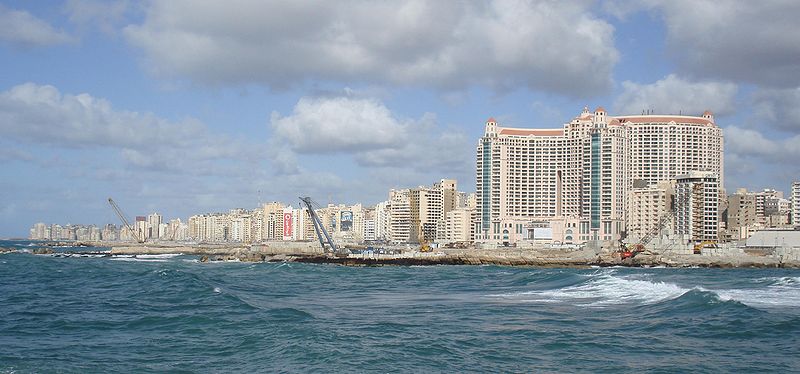
Location
 Alexandria, with a population of 4.1 million, is the second-largest city in Egypt, and is the country's largest seaport, serving about 80% of Egypt's imports and exports. Alexandria is also an important tourist resort. Alexandria extends about 32 km (20 mi) along the coast of the Mediterranean Sea in north-central Egypt. It is home to the Bibliotheca Alexandrina (the new Library), It is an important industrial centre because of its natural gas and oil pipelines from Suez, another city in Egypt.
Alexandria, with a population of 4.1 million, is the second-largest city in Egypt, and is the country's largest seaport, serving about 80% of Egypt's imports and exports. Alexandria is also an important tourist resort. Alexandria extends about 32 km (20 mi) along the coast of the Mediterranean Sea in north-central Egypt. It is home to the Bibliotheca Alexandrina (the new Library), It is an important industrial centre because of its natural gas and oil pipelines from Suez, another city in Egypt.
|
In ancient times, Alexandria was one of the most famous cities in the world. It was founded around a small pharaonic town c. 331 BC by Alexander the Great. It remained Egypt's capital for nearly a thousand years, until the Muslim conquest of Egypt in AD 641 when a new capital was founded at Fustat (Fustat was later absorbed into Cairo). Alexandria was known because of its lighthouse (Pharos), one of the Seven Wonders of the Ancient World; its library (the largest library in the ancient world); and the Catacombs of Kom el Shoqafa, one of the Seven Wonders of the Middle Ages. Ongoing maritime archaeology in the harbour of Alexandria, which began in 1994, is revealing details of Alexandria both before the arrival of Alexander, when a city named Rhacotis existed there, and during the Ptolemaic dynasty.
|
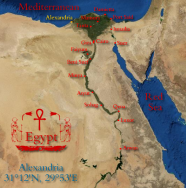
Click on the above Map for a detailed view
|

|
From the late 19th century, it became a major centre of the international shipping industry and one of the most important trading centres in the world, both because it profited from the easy overland connection between the Mediterranean Sea and the Red Sea, and the lucrative trade in Egyptian cotton.
|
History
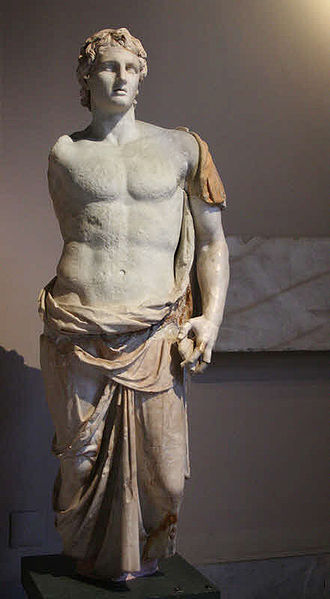
|
Alexandria was founded by Alexander the Great in April 331 BC as Ἀλεξάνδρεια (Alexándreia). Alexander's chief architect for the project was Dinocrates. Alexandria was intended to supersede Naucratis as a Hellenistic centre in Egypt, and to be the link between Greece and the rich Nile Valley. An Egyptian city, Rhakotis, already existed on the shore, and later gave its name to Alexandria in the Egyptian language (Egypt. Ra'qedyet). It continued to exist as the Egyptian quarter of the city. A few months after the foundation, Alexander left Egypt for the East and never returned to his city. After Alexander departed, his viceroy, Cleomenes, continued the expansion. Following a struggle with the other successors of Alexander, his general Ptolemy succeeded in bringing Alexander's body to Alexandria.
|
|
Although Cleomenes was mainly in charge of seeing to Alexandria's continuous development, the Heptastadion and the mainland quarters seem to have been primarily Ptolemaic work. Inheriting the trade of ruined Tyre and becoming the centre of the new commerce between Europe and the Arabian and Indian East, the city grew in less than a generation to be larger than Carthage. In a century, Alexandria had become the largest city in the world and for some centuries more, was second only to Rome. It became the main Greek city of Egypt, with an extraordinary mix of Greeks from many cities and backgrounds.
|
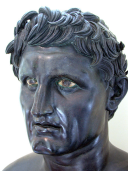
|
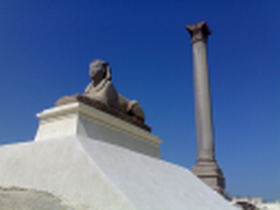
|
Alexandria was not only a centre of Hellenism but was also home to the largest Jewish community in the world. The Septuagint, a Greek translation of the Hebrew Bible, was produced there. The early Ptolemies kept it in order and fostered the development of its museum into the leading Hellenistic centre of learning (Library of Alexandria) but were careful to maintain the distinction of its population's three largest ethnicities: Greek, Jewish, and Egyptian. From this division arose much of the later turbulence, which began to manifest itself under Ptolemy Philopater who reigned from 221–204 BC. The reign of Ptolemy VIII Physcon from 144–116 BC was marked by purges and civil warfare.
|
|
The city passed formally under Roman jurisdiction in 80 BC, according to the will of Ptolemy Alexander but only after it had been under Roman influence for more than a hundred years. It was captured by Julius Caesar in 47 BC during a Roman intervention in the domestic civil war between king Ptolemy XIII and his advisors, and usurper queen Cleopatra VII. It was finally captured by Octavian, future emperor Augustus on 1 August 30 BC, with the name of the month later being changed to august to commemorate his victory.
|
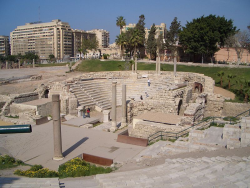 |
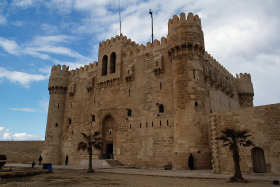
|
In AD 115, vast parts of Alexandria were destroyed during the Greek-Jewish civil wars, which gave Hadrian and his architect, Decriannus, an opportunity to rebuild it. In 215 the emperor Caracalla visited the city and, because of some insulting satires that the inhabitants had directed at him, abruptly commanded his troops to put to death all youths capable of bearing arms. On 21 July 365, Alexandria was devastated by a tsunami (365 Crete earthquake), an event two hundred years later still annually commemorated as "day of horror". In the late 4th century, persecution of pagans by newly Christian Romans had reached new levels of intensity.
|
|
In 391, the Patriarch Theophilus destroyed all pagan temples in Alexandria under orders from Emperor Theodosius I. The Brucheum and Jewish quarters were desolate in the 5th century. On the mainland, life seemed to have centered in the vicinity of the Serapeum and Caesareum, both which became Christian churches. The Pharos and Heptastadium quarters, however, remained populous and were left intact. In 619, Alexandria fell to the Sassanid Persians. Although the Byzantine Emperor Heraclius recovered it in 629, in 641 the Arabs under the general Amr ibn al-As captured it after a siege that lasted fourteen months.
|
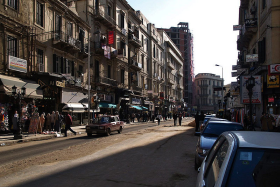
|
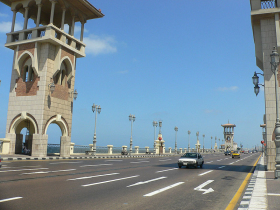
|
Alexandria figured prominently in the military operations of Napoleon's expedition to Egypt in 1798. French troops stormed the city on 2 July 1798, and it remained in their hands until the arrival of a British expedition in 1801. The British won a considerable victory over the French at the Battle of Alexandria on 21 March 1801, following which they besieged the city, which fell to them on 2 September 1801. Mohammed Ali, the Ottoman Governor of Egypt, began rebuilding the city around 1810, and by 1850, Alexandria had returned to something akin to its former glory.
|
|
In July 1882, the city came under bombardment from British naval forces and was occupied. In July 1954, the city was a target of an Israeli bombing campaign that later became known as the Lavon Affair. Only a few months later, Alexandria's Mansheyya Square was the site of a failed assassination attempt on Gamal Abdel Nasser.
|
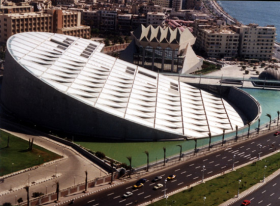
|
Places of interest in and around Alexandria
In Alexandria itself, next to the city sights, like the Bibliotheca Alexandrina, the Coptic Churches, etc...there are quite a number of museums, such as:
As Alexandria is quite central in Northern Egypt, it is in proximity to El-Alamein, Cairo and the Sinai Peninsula, thus ideal for post conference leisure time.
Parts of this text were copied from 
Conference Location
Getting to Alexandria and the Hotel
By Plane



|
From March 2010, Alexandria International Airport will close to commercial operations with all airlines operating out of Borg al Arab Airport where a brand new terminal was completed in February 2010.
Best airlines to reach Alexandria from Europe are Turkish Arlines from Istanbul, BMI from London and Olympic Airlines from Athens.
At the airport there are taxis and buses available to take you to Alexandria city centre.
|
By Train


|
The railway line extends from "Misr Station"; the main railway station in Alexandria, to Abu Qir.
Railway stations include:
* Misr Station (the main station)with links to Cairo.
* Sidi Gaber Station
|
By Bus and Taxi

 |
Several bus companies offer a bus service into Alexandria at a very low price range: 20-35 LE. Buses are air conditioned and come complete with a hostess trolley service. Companies include Golden Arrow, West Delta, Super Jet, Pullman and El Gouna. Operating times vary from one company to another, but there are trips between Cairo and Alexandria virtually every hour from early morning till midnight.
There are a variety of local bus services which have improved significantly in the past few years, but they are rather confusing for those who haven't lived in Alexandria for a while. Apart from city buses, you will also find "mini-buses", which work on hop-and-go basis. They are easily recognizable 14-person buses, which will stop when you wave and stop where you need to get off. The drivers rarely speak English, so make sure you know the Arabic name of your destination or that you already know where to stop. The routes are usually along the main streets and cost between LE 0.50-1.50.
Alexandria's yellow and black taxis are a good way to travel in the city, and a cheap one as well. Be careful though: taxis will uniformly refuse to use meters (the rates haven't been adjusted in years) and drivers love to take advantage of non-Alexandrians, so it's best to agree on the fare before you get in. No taxi ride between any two points in the city should cost more than 25LE.
To get into a taxi, wave at the driver and yell the name of your destination. If the driver agrees they would park at the side of the road as soon as possible. Some taxis will stop to pick you up even if they already have a passenger, but such offers are best refused.
Fast Call taxis can be booked by phone at 19559 or 0800-999-9999 (toll free). These are pricier but generally much better than ordinary black and and bright blue cabs.
|
By Tram
 |
Alexandria Tram is a tram system in Alexandria, Egypt. It consists of 38 stations. It is one of only 3 non-heritage tram systems in the World that use double-deck cars.
Probably the most useful service for tourists is yellow tram #25, which runs from Raml Station to Ras el-Tin and Fort Qait Bey. You can also hop on any blue tram west from Sidr Gabr bus/railway station to get to Raml, but not all eastbound trams stop there.
Note that the first car (out of three) in the blue trams is reserved for women only.
|
By Car
 |
* The International coastal road. (Alexandria - Port Said)
* The Desert road. (Alexandria - Cairo /220 km 6-8 lanes, mostly lit)
* The Agricultural road. (Alexandria - Cairo)
* The Circular road. the turnpike
* Ta'ameer Road "Mehwar El-Ta'ameer" - (Alexandria - North Coast)
|
Useful Maps
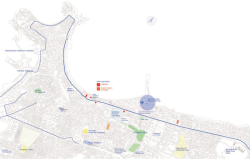
Map of Western Alexandria
|
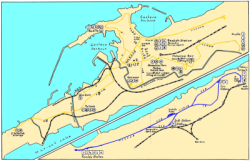
Tram lines in Alexandria
|
Click on the above maps for a more detailed view
Visitor's Survival Guide
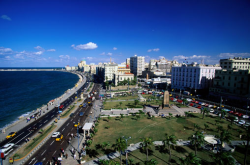
|
Passports and Visas
Visitors from the West obtain their VISA at the airport or any other port of entry.
Currency
The monetary unit is the Egyptian pound. (www.xe.com)
Electric Current: 110 or 220 volts, 50 cycles. It's best to check.
Language
Arabic and English (sometimes even French)
|
Useful Links



 Alexandria, with a population of 4.1 million, is the second-largest city in Egypt, and is the country's largest seaport, serving about 80% of Egypt's imports and exports. Alexandria is also an important tourist resort. Alexandria extends about 32 km (20 mi) along the coast of the Mediterranean Sea in north-central Egypt. It is home to the Bibliotheca Alexandrina (the new Library), It is an important industrial centre because of its natural gas and oil pipelines from Suez, another city in Egypt.
Alexandria, with a population of 4.1 million, is the second-largest city in Egypt, and is the country's largest seaport, serving about 80% of Egypt's imports and exports. Alexandria is also an important tourist resort. Alexandria extends about 32 km (20 mi) along the coast of the Mediterranean Sea in north-central Egypt. It is home to the Bibliotheca Alexandrina (the new Library), It is an important industrial centre because of its natural gas and oil pipelines from Suez, another city in Egypt.
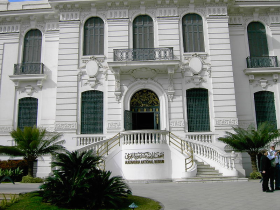



















 Reservations:+49 (0) 6151 905 790
Reservations:+49 (0) 6151 905 790 Fax: +20 (0) 354 976 90
Fax: +20 (0) 354 976 90 Email:
Email:
















